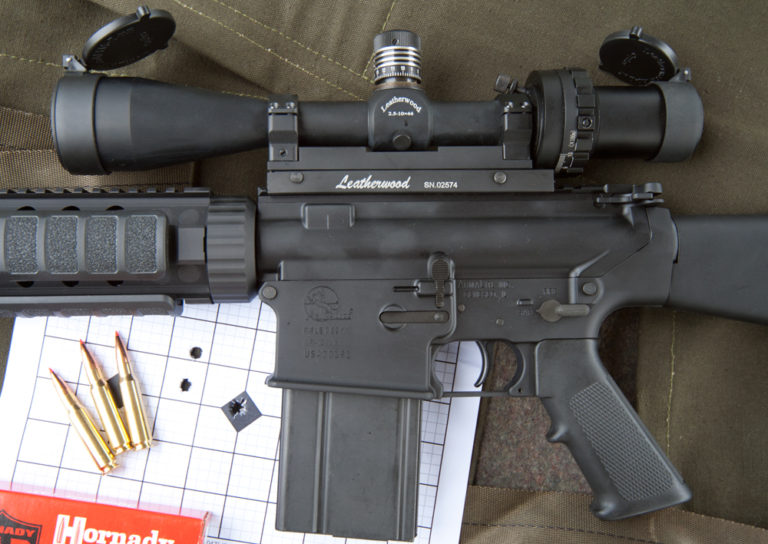
Once nearly forgotten, the AR-10 has risen to become a military and civilian favorite.
The history of the AR-10 and variants:
- Eugene Stoner designed the AR-10 in 1955.
- Competed against M14 and FAL to replace the M1 Garand as U.S. Military's battle rifle.
- Failed to in part due to a barrel rupture.
- Refined, the rifle saw action with a number of other militaries.
- Languished from early 1960s to mid-1990s until Knight Armament dusted off the design.
- Stoner aided design in what became the SR-25.
- Rifle was enhanced for long-range shooting and partial AR-15 compatibility.
- The U.S. Military adopted it designated as Mk11 Mod 0.
- Later variant, Model M110 SASS, replaced the M24 Sniper Weapon System.
The winds of change have swept across the AR world in recent years. No longer simply content with enhanced ways to pitch the same ol' 5.56 NATO ammunition, shooters have scoured the market for new, bigger and meaner cartridges to feed their beasts.

For the AR-15, this is a relatively new trend that has resulted in some interesting options — 300 Blackout, 6.8 SPC, .224 Valkyrie. However, caliber flexibility is nothing new to this branch of the black rifle family. The AR-15’s bigger and older brother has been doing it for years.
With more room to work in the receiver, the AR-10 has historically proven more supple when breaking the bonds of its original chambering — .308 Win./7.62x51mm NATO. Aiding its cause, the number of cartridges to come down the line based off the venerable .308 that were naturals in adapting to the semi-automatic rifle — the .260 Rem. and 7mm-08 come to mind. However, those are just the tip of the iceberg with the highly malleable platform.
Capable of digesting everything from a short- to long-action cartridges, the AR-10 has chewed through ammunition as diverse as the iconic .30-06 to modified .45-70 Govt., and even .338 Lapua Magnum. Definitely an asset in a landscape where shooters demand specific rifles, calibers and configurations to meet their purposes. Hence, the AR-10 continues to gain traction with those who demand specific tools for their jobs, be it for whitetail season or a long-range shooting match.
Though, the AR-10 climbing star is a bit surprising. Despite boasting the attributes many modern shooters go to great lengths to explicitly search out, the rifle has had to rise from its own ashes to reach its current popularity. Hard to fathom, but just before the turn of the century the AR-10 was all but set to become a footnote in firearms design.
AR-10 Development
To know the AR-15 is to somewhat know the AR-10. Their stories are somewhat similar, though the larger-caliber direct-impingement rifle’s tale began earlier and was more definitive. At least in terms of its attempt at becoming the U.S. Military’s battle rifle.
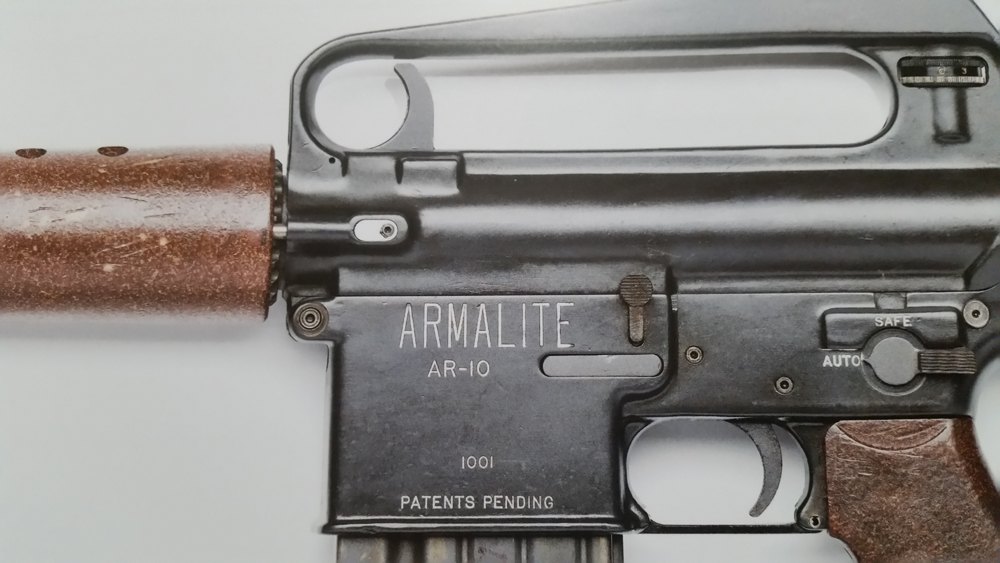
Designed by Eugene Stoner in 1955 and produced by ArmaLite, a subsidiary of Fairchild Engine and Airplane Corporation, it was the company’s attempt to replace a legend — the M1 Garand. It was a vast departure from previous rifle designs, not simply for embracing a unique operating system — what Stoner described as “expanding gas system instead of the conventional impinging gas system” — but also for materials used.
Aluminum alloy receiver and woven fiberglass grip, stock, handguards, even in the dawning of the “Space Age,” must have seemed a galaxy away, particularly to the more traditional ordinance officers. The advanced design and materials, however, endowed the AR-10 with unique properties — not least among them weight. The rifle was nearly 2-pounds lighter than most Garands, a welcome attribute given military mobility had grown in and since World War II.
The two hand-build guns of the fourth prototype submitted to the trials were very similar to the AR-10s we know today, including a non-reciprocating charging handle and hinged upper and lower receivers. Additionally, they fed from the original waffle-pattern 20-round magazine (named such for the structural pattern pressed into them). This is the pattern the most widely used magazines are based off today, such as Magpul’s SR/LR PMAGs.
ArmaLite, to Stoner’s objection, pushed the cutting-edge aspects of the rifle too far in the submitted prototypes, proving the AR-10’s downfall. In particular, its aluminum-steel composite barrel, the first of its kind, burst during the 1957 torture test. The failure marred the AR-10 for the remainder of the trials and the rifle never recovered in the eyes of the military, even with ArmaLite replacing them with steel barrels after the incident.
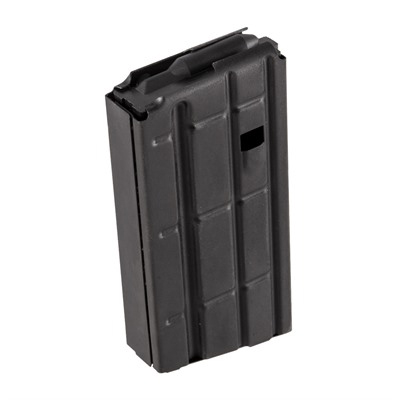
It must have been a bitter pill for Stoner to swallow, given his rifle had won high marks up to that point. Gun writers of the time noted testers were impressed with his creation, even going so far as to say it was the best battle rifles ever put through its paces at the Springfield Armory. High praise, especially since it was up against other legendary rifles, such as Fabrique Nationale’s FAL and the trial’s eventual winner the M14.
AR-10 Essentials: Hit the Bullseye Every Time
The AR-10 didn’t go down in the annals of U.S. Military history itself, however, it still left its mark. A scaled-down version of the design, what we know as the AR-15, was submitted to the military trials and was eventually adopted by the military, designated as the M-16 in the mid-1960s.
Service History
Despite missing its opportunity to serve as the U.S. Military’s primary arm, the AR-10 nevertheless saw its share of action. ArmaLite licensed the design to the Dutch manufacturer Artillerie-Inrichtingen, where variations found their way into military service on every continent, the first being in Africa.
Sudan bought the first batch of Dutch-made AR-10s — 2,500 of them — in 1958. This rifle, known logically as the Sudanese model, featured a flash suppressor instead of the original muzzle compensator, a fluted steel barrel to reduce weight, bayonet lug, sight graduations in Arabic and a steel butt plate. Additionally, the gas tube was moved from the left of the rifle to the top in the configuration familiar today.
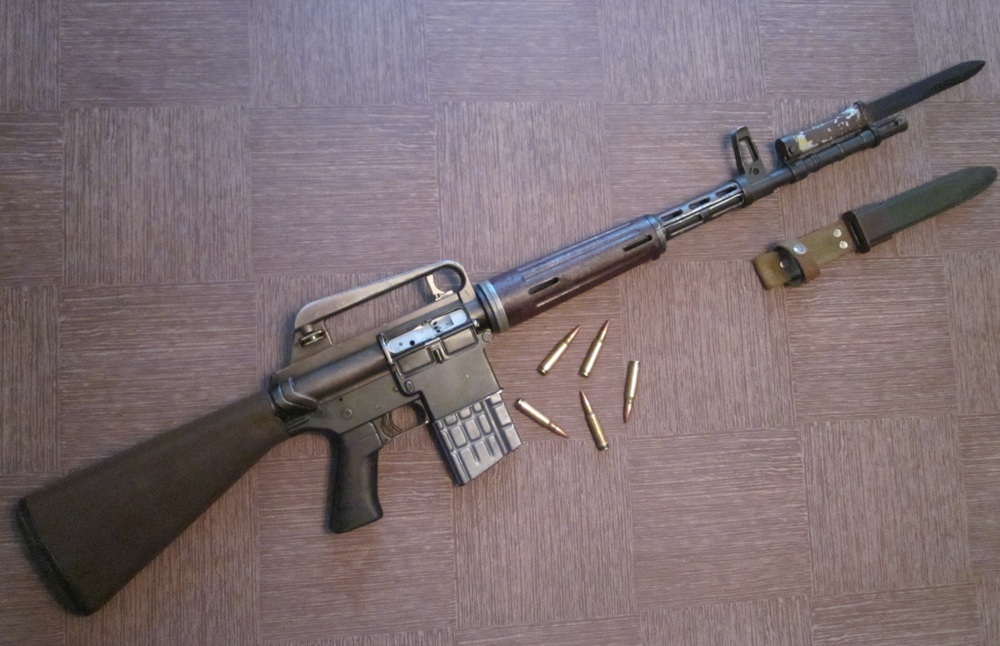
The other well-known configuration named for a nation who purchased it was the Portuguese model. Procured in 1960, the rifle included a telescoping charging handle that doubled as a forward assist and also featured beefed up locking lugs (enhancing the bolt’s strength), improved extractor and simplified three-position gas regulator. Additionally, it had a chrome-lined barrel to help resist fouling and erosion, a feature that would eventually become standard on the early military versions its little brother — the AR-15.
Other countries — Guatemala, Burma, Italy, Cuba — purchased the rifle, but it perhaps saw the most live action in Africa. In Sudan, it was used by the country’s special forces until 1985 and was employed against guerrilla forces and clashes with neighboring countries. The AR-10 was also a mainstay in the Sudanese Civil Wars. In Portuguese hands, it fought nearly 13-year Portuguese Colonial War in Angola, Guinea-Bissau and Mozambique.
Despite gaining some international military traction, the ArmaLite focused on to what it believed to be its more gifted child — the AR-15. The move left the AR-10 to languish from early 1960 on through the 1990s.
The design’s prospected lightened near the mid 1990s, when Knight Armament teamed up with Eugene Stoner to resurrect the AR-10. However, the focus of the rifle changed somewhat, from battle to sniper rifle. Pegged as the SR-25 (Stoner Rifle), the revamped design featured a number of accuracy enhancements, including a longer heavier barrel. Furthermore, it was 60-percent compatible with the ubiquitous Mil-Spec AR-15 making it easier to manufacture and maintain.
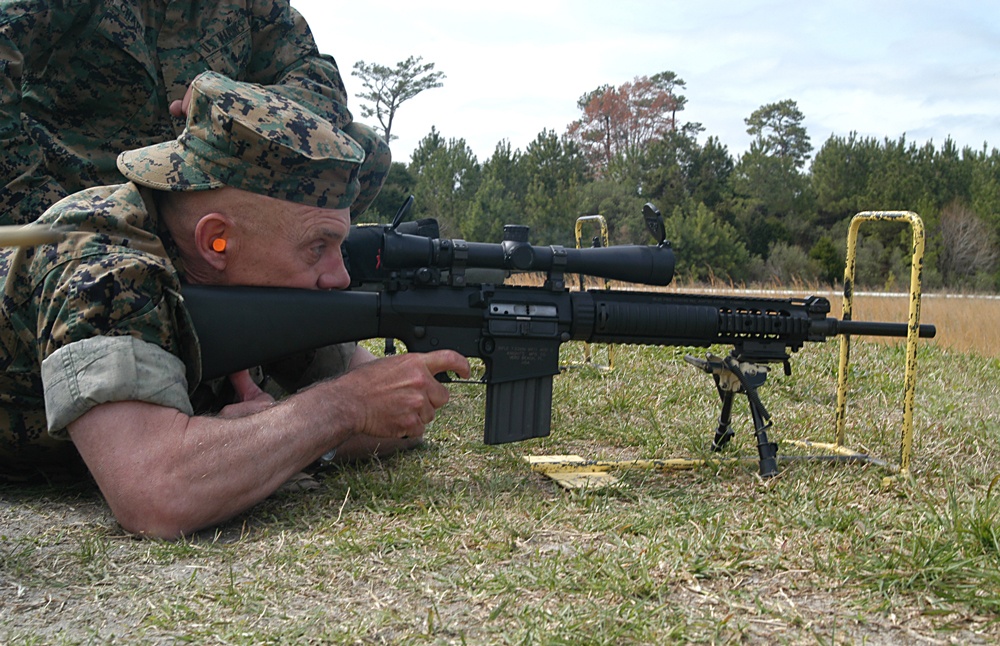
The SR-25 caught the attention of the right people. Eventually, it was adopted by the United States Special Operations Command and designated as the Mk11 Mod 0 sniper rifle. More recently, the U.S. Army replaced its long-toothed M24 Sniper Weapon System with an evolution of the Mk11, the M110 SASS (Semi-Automatic Sniper System).
In some respects, the rifle had come full circle, though it took a half-century. But the long, strange trip in the U.S. Military’s hands didn’t end up simplifying the AR-10 for the civilian world. If anything, it most likely complicated matters much more.
Pattern Differences
The AR-10’s scant military service has done more than belated its embrace by the greater shooting world. It’s made the modular system a plum mess when it comes to building, upgrading and maintaining a system that shooters have become accustomed to picking and placing parts on. The difficulty lies in there is really not one AR-10.
In essences, it’s a misnomer to call anything but the AR-10 — the ArmaLite AR-10 — an AR-10.
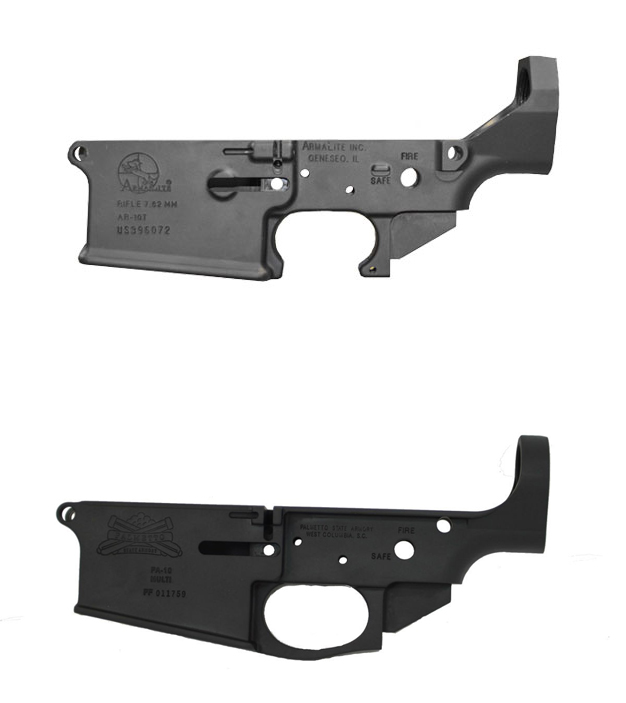
It is a trademarked variation of Eugene Stoner’s original rifle and is only compatible with a certain pattern of firearms built to similar specs. In the case of the ArmaLite AR-10, these are Knight’s Armament, LaRue Tactical, Eagle Arms and Mega Arms. Luckily, there is only one other dominant pattern of the rifle out there, the DPMS or LR-308. Examples of players on this team include Palmetto State Armory, Aero Precision, CMMG, Fulton Armory, Falkor and JP Enterprises.
The most notable difference is at the heart of each pattern, their receivers. The AR-10 upper and lower receivers have an angular rear cut, while the LR-308 has an elliptical one. This, for the most part, makes each incompatible with the other — though there are inadvisable exceptions to the rule. Same goes for all the parts — which tend to only play nice with others of their own kind. Furthermore, there are some AR-15 parts that function on its bigger brother — helpful given their abundance — but not all. If that’s not complex enough for you, there are highly proprietary renditions of the original ArmaLite AR-10 that are absolutely anti-social with the rest of the larger-caliber rifle world.
In short, perhaps more than any other modern modular system, the AR-10 — or LR-308, if you like — takes more consideration. Is one particular pattern better than another? Depends on what better is. If it is to stay true to Stoner’s original vision, then the ArmaLite AR-10 might be the better bet. If it is greater access to a variety of upgrades and parts, then you might consider the LR-308.
Whatever your choice, research is the word and diligence the action.
Rifle's Present And Future
Mil-Spec spoiled us. As long as your carbine or a part has those two little abbreviations then the world is your oyster. A matter of finding what you like to enhance your AR-15 and simply installing it on your carbine. That’s quite a luxury. Not one shared by the AR-10 or LR-308 or any other variation completely, but close enough that they remain among the most flexible and versatile rifles available today.

True enough, a CQB carbine an AR-10 will not make and that’s OK. Because of the rifle’s talents at mid- to long-range more than makes up for this shortcoming. The U.S. Military realized this with the adoption of the M110 SASS, which not only delivers laser-like accuracy, but also brush-fire fast follow-up shots. For civilian shooters, this translates to a superior rifle for a number of applications — from hunting to long-range competitions. Even general plinking is kicked up a notch with an AR-10, LR-308 or what have you.
Furthermore, the AR-10 caliber selection is unparalleled. In addition to the previously mentioned chamberings, the rifle is available in 6.5 Creedmoor, .22-250 Rem., .300 Win. Mag … the list goes on and on. And it keeps getting better with new and innovative ammunition such as Wilson Combat’s .458 HAM’R coming out every year. A trend likely to continue into the foreseeable future.
The AR-10 might have been a late bloomer, but has proven as talented as the rest of Stoner family.

Next Step: Get your FREE Printable Target Pack
Enhance your shooting precision with our 62 MOA Targets, perfect for rifles and handguns. Crafted in collaboration with Storm Tactical for accuracy and versatility.
Subscribe to the Gun Digest email newsletter and get your downloadable target pack sent straight to your inbox. Stay updated with the latest firearms info in the industry.

![Best Concealed Carry Guns In 2025 [Field Tested] Wilson Combat EDC X9S 1](https://gundigest.com/wp-content/uploads/Wilson-Combat-EDC-X9S-1-324x160.jpg)


![Best 9mm Carbine: Affordable PCCs [Tested] Ruger Carbine Shooting](https://gundigest.com/wp-content/uploads/Ruger-Carbine-Shooting-100x70.jpg)
![Best AR-15: Top Options Available Today [Field Tested] Harrington and Richardson PSA XM177E2 feature](https://gundigest.com/wp-content/uploads/Harrington-and-Richardson-PSA-XM177E2-feature-100x70.jpg)

The Rock River LAR-8 is proprietary and uses the FAL mags. It is not compatible with Stoner pattern AR-10s.